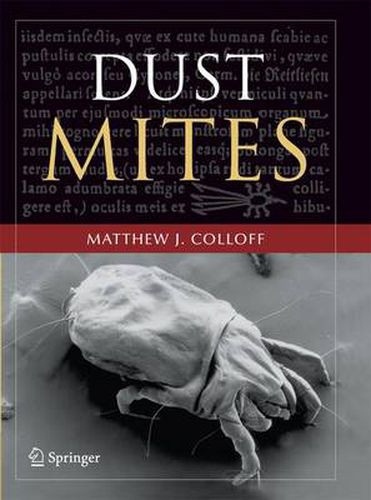Readings Newsletter
Become a Readings Member to make your shopping experience even easier.
Sign in or sign up for free!
You’re not far away from qualifying for FREE standard shipping within Australia
You’ve qualified for FREE standard shipping within Australia
The cart is loading…






Conservatively, at least 100 million people are affected by house dust mite allergy worldwide, manifesting itself as asthma, rhinitis or atopic dermatitis. Despite the growing recognition of this major public health problem, and commitment of considerable research resources, there is still no simple, effective, generally-applicable strategy for dust mite control. The reasons for this are complex, but a contributing factor remains some important knowledge gaps and misconceptions regarding aspects of biology and ecology of dust mites.
The purpose of this book is to provide a comprehensive reference work for all readers with an involvement or interest in house dust mite research and management, incorporating for the first time in a single volume the topics of systematics and identification, physiology, ecology, allergen biochemistry and molecular biology, epidemiology, mite control and allergen avoidance. It is hoped the book will help spread the message that studies of the biology and ecology of house dust mites should be regarded within the context of allergic disease rather than as ends in themselves, and that approaches to mite control in clinical management are subject to the same series of ecological rules as any other major problem in pest management.
$9.00 standard shipping within Australia
FREE standard shipping within Australia for orders over $100.00
Express & International shipping calculated at checkout
Conservatively, at least 100 million people are affected by house dust mite allergy worldwide, manifesting itself as asthma, rhinitis or atopic dermatitis. Despite the growing recognition of this major public health problem, and commitment of considerable research resources, there is still no simple, effective, generally-applicable strategy for dust mite control. The reasons for this are complex, but a contributing factor remains some important knowledge gaps and misconceptions regarding aspects of biology and ecology of dust mites.
The purpose of this book is to provide a comprehensive reference work for all readers with an involvement or interest in house dust mite research and management, incorporating for the first time in a single volume the topics of systematics and identification, physiology, ecology, allergen biochemistry and molecular biology, epidemiology, mite control and allergen avoidance. It is hoped the book will help spread the message that studies of the biology and ecology of house dust mites should be regarded within the context of allergic disease rather than as ends in themselves, and that approaches to mite control in clinical management are subject to the same series of ecological rules as any other major problem in pest management.